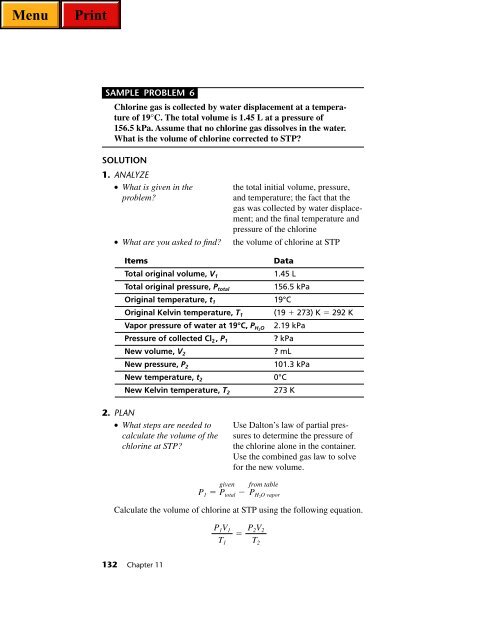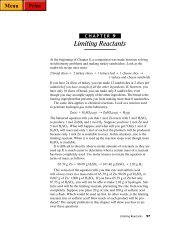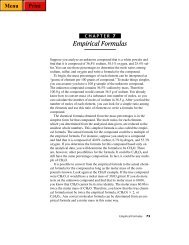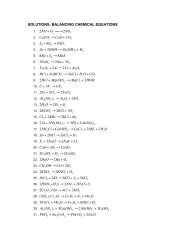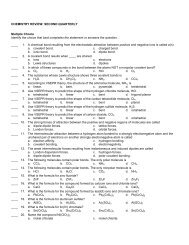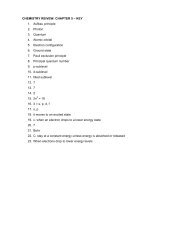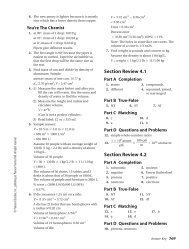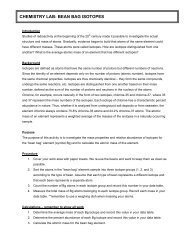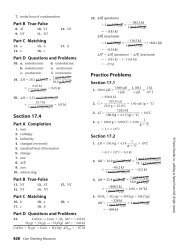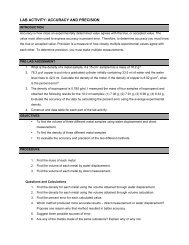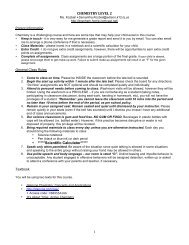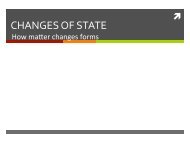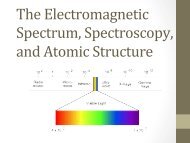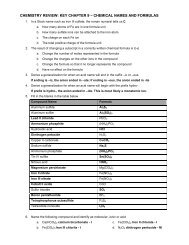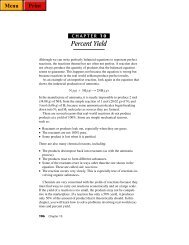Gas Laws
Gas Laws
Gas Laws
Create successful ePaper yourself
Turn your PDF publications into a flip-book with our unique Google optimized e-Paper software.
SAMPLE PROBLEM 6<br />
Chlorine gas is collected by water displacement at a temperature<br />
of 19°C. The total volume is 1.45 L at a pressure of<br />
156.5 kPa. Assume that no chlorine gas dissolves in the water.<br />
What is the volume of chlorine corrected to STP?<br />
SOLUTION<br />
1. ANALYZE<br />
• What is given in the the total initial volume, pressure,<br />
problem? and temperature; the fact that the<br />
gas was collected by water displacement;<br />
and the final temperature and<br />
pressure of the chlorine<br />
• What are you asked to find? the volume of chlorine at STP<br />
Items Data<br />
Total original volume, V 1<br />
Total original pressure, P total<br />
Original temperature, t 1<br />
Original Kelvin temperature, T 1<br />
132 Chapter 11<br />
1.45 L<br />
156.5 kPa<br />
19°C<br />
Vapor pressure of water at 19°C, 2.19 kPa<br />
Pressure of collected Cl 2, P 1<br />
New volume, V 2<br />
New pressure, P 2<br />
New temperature, t 2<br />
New Kelvin temperature, T 2<br />
P H2O<br />
(19 273) K 292 K<br />
? kPa<br />
? mL<br />
101.3 kPa<br />
0°C<br />
273 K<br />
2. PLAN<br />
• What steps are needed to Use Dalton’s law of partial prescalculate<br />
the volume of the sures to determine the pressure of<br />
chlorine at STP? the chlorine alone in the container.<br />
Use the combined gas law to solve<br />
for the new volume.<br />
P 1 given<br />
P total from table<br />
P H2O vapor<br />
Calculate the volume of chlorine at STP using the following equation.<br />
P 1V 1<br />
T 1<br />
P 2V 2<br />
T 2


